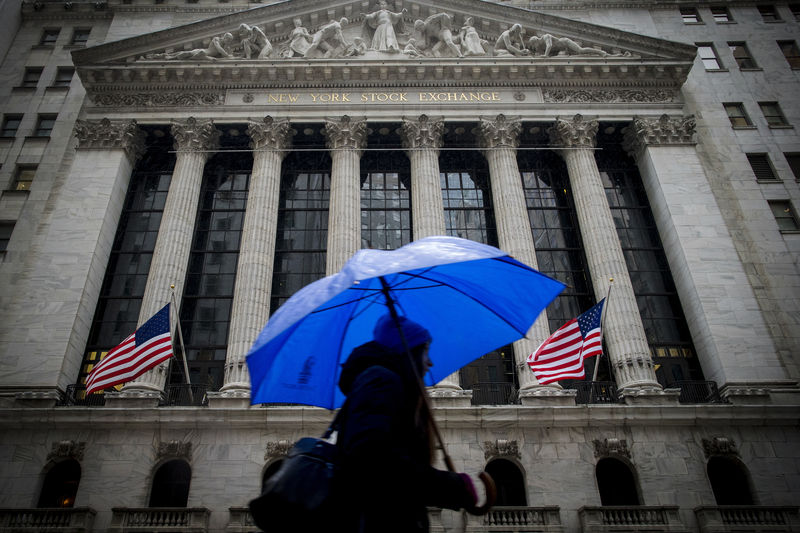Investing.com -- The Federal Reserve leaves interest rates unchanged following its final two-day policy meeting of 2023. However, officials hinted that they may start to roll out cuts next year, fueling a sharp rally in stocks and bonds. Attention now turns to central banks in Europe, where traders will be curious to see how much policymakers in the region push back against hopes that they will take a dovish position similar to the Fed.
1. Fed keeps rates steady and signals 2024 rate cuts
The Federal Reserve has kept interest rates steady at a more than two-decade high, but indicated that it would begin to slash borrowing costs next year.
The Federal Open Market Committee unanimously voted to hold rates at a range of 5.25% to 5.50% on Wednesday, although the U.S. central bank's quarterly "dot plot" -- an outline of future rate expectations -- showed that policymakers were factoring in three quarter-point cuts in 2024, a more dovish outlook than prior estimates.
In closely-watched comments following the decision, Fed Chair Jerome Powell also acknowledged that officials are "likely at or near the peak rate for this cycle."
Powell added that the Fed, which has embarked on an unprecedented run of rate hikes in a bid to quell elevated inflation, is now "getting back" to a point where it is aiming to prevent unemployment from spiking as well. The remark suggests that while the Fed may not be completely satisfied with the current pace of price growth, it could be starting to shift its focus on to preventing a more restrictive policy stance from sparking a recession in the broader economy.
2. Futures rise after main U.S. averages soar
Wall Street Indices and the TSX opened higher, an extension to steep gains posted in the prior session that were sparked by the Fed's outlook for rate reductions next year.
The TSX closed at a 10 month high yesterday. Meanwhile, the main indices on Wall Street spiked, with the 30-stock Dow Jones Industrial Average in particular touching a record high. The benchmark S&P 500 jumped to its best closing level since 2022, while the tech-heavy Nasdaq Composite gained 1.4%.
U.S. Treasury yields also slipped on the Fed's projections. The rate-sensitive 2-year Treasury yield dropped to its lowest mark since June and the benchmark 10-year yield dipped to its weakest point since August. Yields typically move inversely to prices.
"The market looks at the median outcome [of the dot plot], and hey presto it’s gleaned a Fed that is leaning into rate cuts in 2024, at least more than they were," analysts at ING said in a note. "A far more hawkish Fed had been anticipated."
3. Dollar sinks, gold spikes
The dollar slumped to its lowest mark in four months on Thursday, as traders raised their bets that the Fed will move to slash rates early next year.
Markets are now pricing in an almost 74% probability that the central bank will roll out a 25 basis-point cut at its gathering in March, followed by a further quarter percentage-point reduction in May, according to Investing.com's Fed Rate Monitor Tool.
Heightened expectations for declining rates may be unattractive for foreign investment, weighing on the relative value of the dollar. By 05:01 ET, the dollar index, which measures the U.S. currency against a basket of its peers, had dropped by 0.3% to 102.6.
"We still suspect that there will be occasions for the dollar to rebound on evidence of further resilience in the [U.S.] outlook. However, that may be a story for January now," the ING analysts said.
The weakening in the greenback helped make gold less expensive for overseas buyers, contributing to a spike in spot prices for the yellow metal above the key $2,000 per troy ounce level.
4. Crude moves up on inventories draw, dovish Fed
Oil prices rose Thursday on a bigger-than-expected weekly draw in U.S. crude storage and weakness in the dollar that was driven by the dovish Fed stance.
U.S. oil inventories fell by 4.3 million barrels in the week to Dec. 8, according to data from the Energy Information Administration on Wednesday, much more than 650,000 barrels expected. But this draw comes on the heels of several consecutive weeks of strong builds, which could signal waning winter demand.
